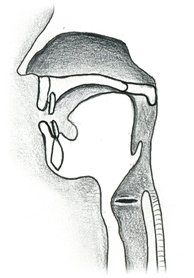Traditional Articulation Therapy

Traditional Articulation Therapy: The speech therapy techniques featured on this site are based on traditional articulation therapy. Traditional speech therapy is perhaps the most frequently used method of speech therapy and has been used to help children overcome speech errors since the 1930s. It has stood the test of time. Traditional artic therapy presents sequenced activities, which teaches children tar-get sounds in successive stages. It progresses from sound in isolation to using the target sound correctly in conversational speech.
Traditional articulation therapy is perhaps not the best speech therapy for children with multiple speech errors or children who have been diagnosed with severe phonological disorder or have childhood apraxia of speech. Children with severe speech sound disorders respond best to need linguistic methods of speech therapy, which will be covered later in this manual.
Children seen for speech therapy make speech errors that have become rein-forced by years of mis-articulation of the sound/s. Children, especially pre-school aged children, who make speech errors are often unaware that they are doing so and may find it difficult to produce a particular sound in a word. This is especially true of children who attempt to follow a frustrated parent’s model, ‘Say cat, not tat!’ Children who make speech errors learn best by first being taught the target sounds in isolation and in nonsense syllables, before venturing on to learn speech sounds at word, phrase and sentence levels.
Traditional Articulation Therapy - Sound Stimulation
The primary goal of speech therapy is to teach correct sound production to a child. There are a large variety of techniques that can be used to prompt correct speech sound production. Some of the more popular and valuable techniques are listed here.
Discriminating between Error and Target Sound
Before prompting children to practice articulating the correct target sound, it is important for them to first discriminate between the error sound and the new target sound. We do this by allowing children to effectively become the teacher. The child judges whether the clinician’s sounds in words are correct. For instance, ‘Here are two pictures of a ship, pictures A and B. I want you to point to the correct picture. Is it picture A: ‘I sailed on a ship,” or is it picture B: ‘I sailed on a sip. Which is correct, A or B?’
Importantly, at this early stage in therapy, the child only has to judge whether the sound was in error and does not have to attempt to produce the correct sound. This early training is a metalinguistic task, which is a powerful means of learning new language skills.
Traditional Articulation Therapy : Imitation
Imitation is an important technique when first teaching a child any new speech sound. Imitation requires the child to copy the clinician's correct model of a speech sound. For instance, the clinician first engages the child's full attention and then produces a clear /s/ sound.
The clinician is then silent and the child is encouraged to copy exactly the sound the clinician has produced. In many cases the child will struggle to accurately reproduce the sound. This is fine, because the child's inability to correctly reproduce a clear target sound gives the clinician a good understanding of how the child's speech error is occurring.
Stimulating Speech Sounds – Phonetic Placement
This is perhaps the most popular method of unearthing new and correct speech sounds in young children. Essentially the clinician demonstrates how to correctly place the tongue, teeth and lips – the articulators, in order to produce the correct speech sound.
This speech therapy sequence is continued on the speech intervention sequence page.
For more information of speech intervention techniques, try some of these webpages...
Click to access speech sound intervention page
Click to learn more about minimal pairs intervention (linguistic method)
Click to learn about multiple oppositions intervention (linguistic method)
Click to learn about empty set intervention (linguistic method)
References
Van Riper, C. & Erickson, R.L. (1996) Speech Correction: An Introduction to Speech Pathology and Audiology. Allyn & Bacon
Williams, A.L. McLeod, S. & McCauley, R.J.(2010) Interventions for Speech Sound Disorders in Children. Paul H. Brookes Publishing Co.
Updated 24/08/2020
